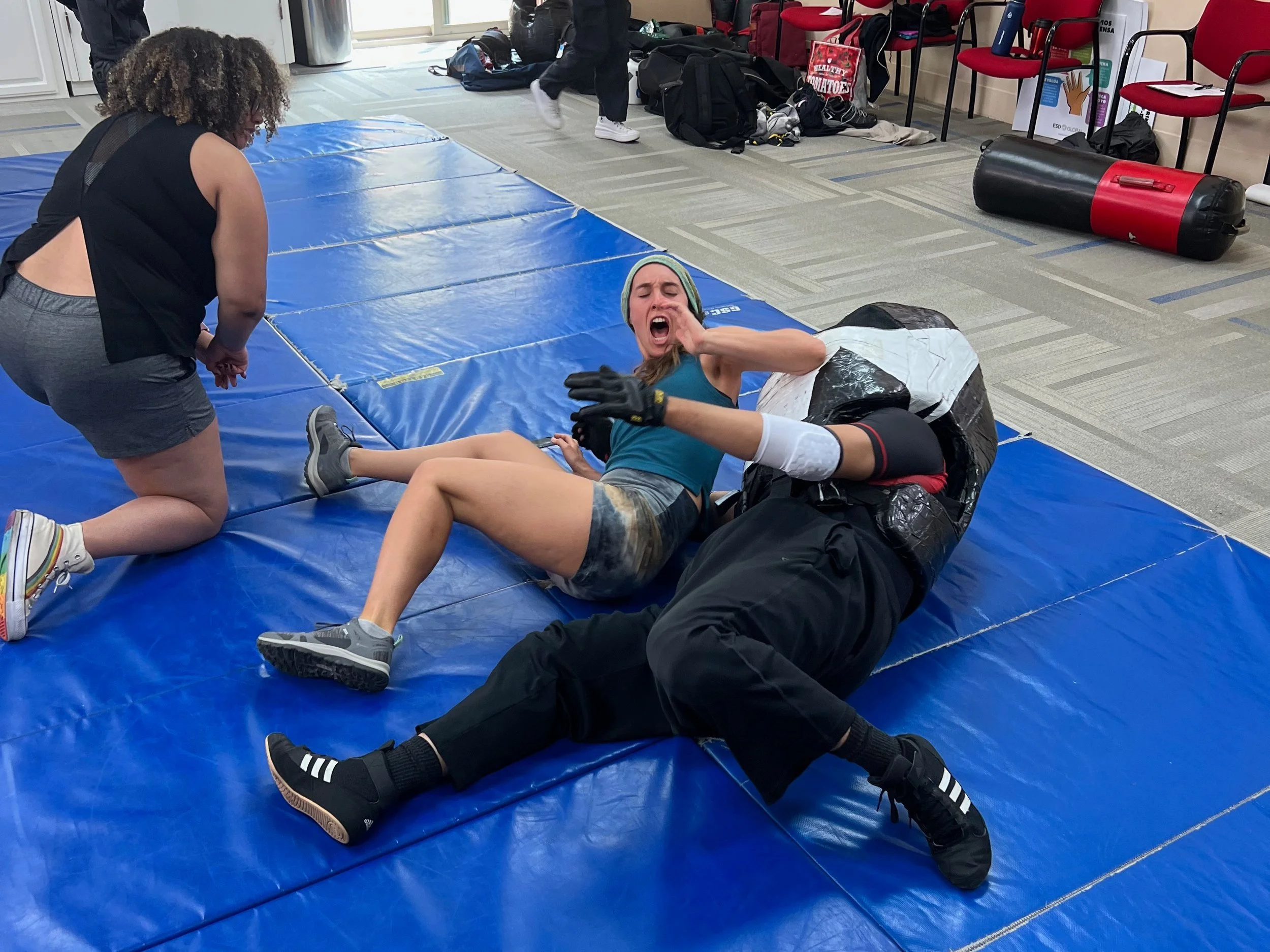“When you’re in the Suit, it’s not about you.”
The Challenges of Teaching Simulation-Based Empowerment Self-Defense
Author’s Note: Hello everyone, thank you for taking the time to read this!
Please note that the information I present here is based on resources from a variety of professionals and my own observations, training, and experience as a mental health clinician and self-defense instructor. By no means is anything I share all-encompassing or a reflection of the organizations of which I’m a part.
My intent is to share my knowledge and add to the body of work that others before me have already created. With that, I hope you enjoy what I have to offer.
For convenience, I will use the term Padded Instructor (PI) to describe my role in the rest of this article.
People often ask me, “What’s it like to be in the suit?”
To start, each PI who dons the suit to teach self-defense has a unique experience, and my reflections and opinions do not reflect all people who have played the role of the “simulated bad guy”.
[Read Michael’s article on being a Padded Instructor with Impact Personal Safety here.]
It’s not about you.
Being in the suit takes many skills, but the most important is having the right mindset—a commitment to helping others become stronger physically, mentally, and emotionally. An experienced PI understands that our big picture goal is to make this world better by teaching our students that it is okay to stand up for themselves by setting strong boundaries, expecting others to respect those boundaries, and utilizing physical self-defense strategies when necessary.
The PI will always be on the receiving end of students’ physical aggression, and in some cases will also be the target of their emotional catharsis. Those who wear the suit need to understand this and not take it personally because it is not about the person in the suit, it is about the success of the student.
The Challenges of Simulating Danger
The PI places students in simulated scenarios where they experience varying levels of threat to learn how to successfully manage and survive dangerous situations in real life. Understanding how the human body responds to progressive levels of stress is a key component to successful development in the student. The PI must prioritize safety even as they create as close to a life-threatening situation as possible. The students need to “feel” a certain level of perceived threat for their bodies to learn to respond appropriately.
Creating the simulation of these “life-threatening situations” is complex. It requires suspending what the PI thinks they know about real-life violence and studying gender-based violence (what the students might have gone through, or are actively going through) enough to construct effective scenarios.
In some ways, the PI needs to sacrifice their ego; without this mindset, the physical conditioning, role playing, and teaching lack the necessary foundation for the PI to perform their role effectively. There are times the role can be physically and emotionally taxing because of the energy required to create a certain level of realism. This is to be expected.
Layering Confidence
Creating this environment is essential. We do not have many spaces in our culture where we encourage women to stand up for themselves. As padded instructors, we help students develop their confidence, thereby improving the effectiveness of using physical self-defense if someone crosses their boundaries in a manner that puts them in danger.
It is the PI’s job to give students the opportunities to hit as hard as they can with the intent of causing physical harm and damage WITHOUT worrying that they will hurt the person inside the suit. Students must experience this for themselves in order to really believe in their ability to fight back.
Once this level of security becomes familiar, the students then need to explore the use of verbal skills to assert themselves effectively. Here, the PI must be able to provide a variety of characters and verbal scenarios for the student to practice and synthesize the verbal skills taught in class.
These physical and verbal skills are taught by the team in a gradual progression that grows more complex as the students demonstrate their successful use of the skills. This is where the PI must show that they can provide experiences that push the students hard enough to be challenged, but not so much that they become injured or lose motivation to improve.
Concluding Thoughts
The role of the PI is complex, requiring physicality, sensitivity, and creativity. Ultimately, these skills come together to help the populations we serve to become stronger. It is our goal to support our students in empowering themselves to no longer be targets of gender-based violence, and to survive any situation that comes their way.
It can be thankless, and that needs to be acceptable, because it’s not about receiving thanks. It’s about making the world better than it is now.
Want to learn more about the Association of ESD Professionals and join our growing community? Email us at hello@ESDProfessionals.org.


